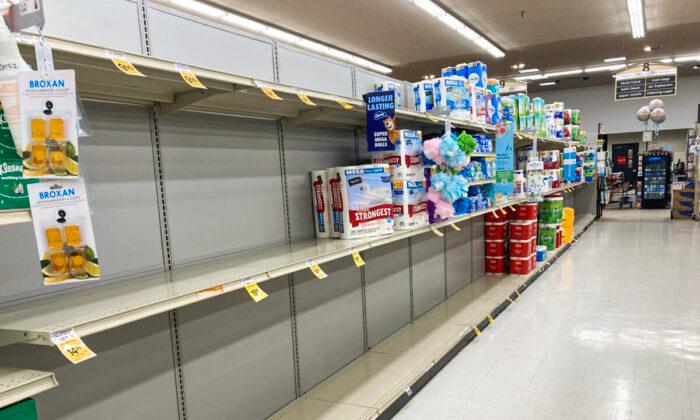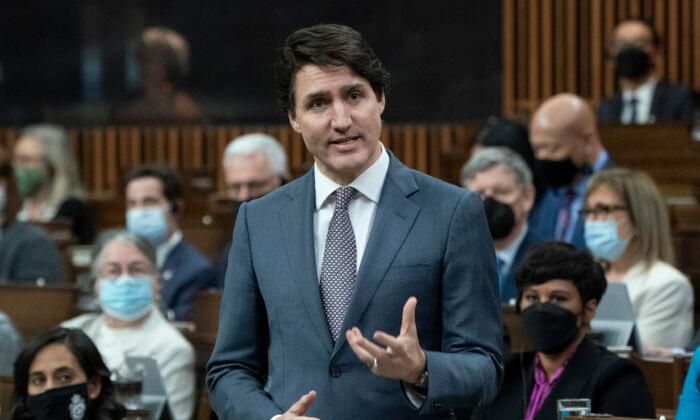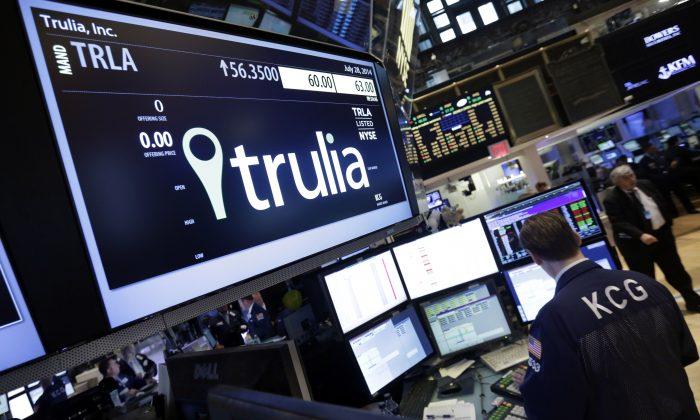Supply chain disruptions arising from the COVID-19 lockdowns have crippled the shipment of all kinds of goods from around the world.
Everything from toilet paper to cleaning products to antibiotics to household appliances has been struggling to get to their final destination. A poll run in October 2021 indicated that 54 percent—more than half—of Americans were experiencing “delays or shortages in trying to buy ordinary consumer products.”
But there’s another product, one even more important than all of these, that’s facing a global supply crunch as well: food.
If you’ve been noticing more empty shelves than usual at the grocery store, it’s not your imagination.
“U.S. groceries typically have 5 percent to 10 percent of their items out of stock at any given time; right now, that unavailability rate is hovering around 15 percent,” said Geoff Freeman, president and CEO of Consumer Brands Association.
The Looming Threat to the US Food Supply
Studies have shown that 48 percent of the world population in 2008 was dependent on nitrogen fertilizers for their daily access to food. Today, that amounts to roughly 3.5 billion people.And when it comes to farming, fertilizer isn’t something you can take out of the equation if prices get too high.
Fertilizing farmland provides two essential functions. Aside from just feeding plants, fertilizer actually increases crop production. It allows farmers to grow more crops per acre. As crops are grown and harvested, they drain minerals from the soil, so fertilizer is also key in revitalizing that soil.
As far as farmers are concerned, fertilizer represents the largest expense they have to absorb. And the bad news is that the price of fertilizers, when they can get them, has more than doubled in the past year.
The cause of these soaring prices comes from a number of sources.
First, there’s a shortage of the chemical ingredients needed to produce fertilizer. The costs associated with its production are going sky high as well.
Commercial fertilizers all require three key chemicals to provide nutrition to the soil it’s being applied to: nitrogen, potassium, and phosphorus.
Ammonia is the key ingredient in nitrogen fertilizers. Chemically speaking, ammonia is produced by combining nitrogen in the air with hydrogen extracted from methane—a component of natural gas. The reaction process requires heat, which is also produced by burning natural gas.
This means that roughly 70 percent of the price of ammonia is dependent on the price of natural gas—which has been skyrocketing for the past two months.
Potassium, in its natural form of potash, is mined from deep underground. The process and infrastructure required to locate and extract the mineral are extremely costly. And those costs are rising as well.
Producing phosphorus is also a capital-intensive process. Its price has nearly doubled over the past year to $875 per ton from roughly $475. And its supply is about to get tighter, too.
No Quick or Simple Fix
In the face of these shortages and increased costs, farmers are likely to plant less “fertilizer-intensive” crops, switching from corn (a major food staple around the world) to soybeans.Using less fertilizer in the farming process will also lead to lower harvests in the future. A decrease in crop production threatens just about every form of food you can imagine (remember, beef and chicken are all fed grains, too).
The Biden administration may go on and on about “fixing” the supply chain, and the Federal Reserve can spout off about increasing interest rates to wrestle inflation under control, but neither of them has a solution for the food problem.
The unfortunate reality is that food prices are likely to keep rising for the foreseeable future. Investors looking to take advantage of this move should look to the commodities sector. Funds such as the Elements Rogers International Commodity Index and the U.S. Commodity Index Fund should perform well.






Friends Read Free